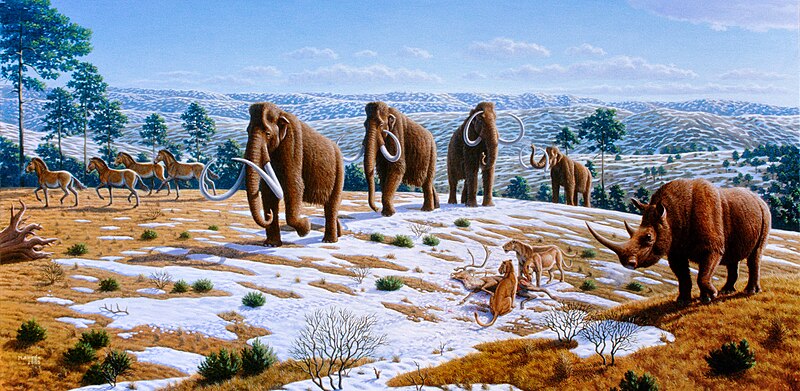Fitxategi:Ice age fauna of northern Spain - Mauricio Antón.jpg

Aurreikuspen honen neurria: 800 × 391 pixel. Bestelako bereizmenak: 320 × 156 pixel | 640 × 313 pixel | 1.024 × 501 pixel | 1.280 × 626 pixel | 2.584 × 1.263 pixel.
Bereizmen handikoa ((2.584 × 1.263 pixel, fitxategiaren tamaina: 3,53 MB, MIME mota: image/jpeg))
Fitxategiaren historia
Data/orduan klik egin fitxategiak orduan zuen itxura ikusteko.
| Data/Ordua | Iruditxoa | Neurriak | Erabiltzailea | Iruzkina | |
|---|---|---|---|---|---|
| oraingoa | 04:13, 1 martxoa 2020 |  | 2.584 × 1.263 (3,53 MB) | Alphathon | Minor tweak |
| 16:12, 25 otsaila 2020 |  | 2.584 × 1.263 (3,51 MB) | Alphathon | Re-corrected (rotation, white point etc) from original version. This version retains the original signature (see also Commons:Watermarks#What are not watermarks) | |
| 17:31, 29 azaroa 2012 |  | 2.558 × 1.240 (2,2 MB) | FunkMonk | Contrast. | |
| 14:59, 6 martxoa 2012 |  | 2.558 × 1.240 (2,12 MB) | Daniel Mietchen | White balance adjusted. With thanks to Peter Weis. | |
| 10:18, 18 ekaina 2008 |  | 2.558 × 1.240 (1,13 MB) | FunkMonk | {{Information |Description= |Source= |Date= |Author= |Permission= |other_versions= }} | |
| 12:26, 24 apirila 2008 |  | 2.598 × 1.263 (565 KB) | Bender235 | {{Information |Description=Woolly mammoths were driven to extinction by climate change and human impacts. |Source="What Killed the Woolly Mammoth?" Sedwick C ''PLoS Biology'' Vol. 6, No. 4, e99 {{DOI|10.1371/journal.pbio.0060099}} |Date=April 1, 2008 |Au |
Irudira dakarten loturak
Hurrengo orrialdeek dute fitxategi honetarako lotura:
Fitxategiaren erabilera orokorra
Hurrengo beste wikiek fitxategi hau darabilte:
- af.wikipedia.org proiektuan duen erabilera
- als.wikipedia.org proiektuan duen erabilera
- ar.wikipedia.org proiektuan duen erabilera
- ast.wikipedia.org proiektuan duen erabilera
- az.wikipedia.org proiektuan duen erabilera
- be.wikipedia.org proiektuan duen erabilera
- bg.wikipedia.org proiektuan duen erabilera
- bn.wikipedia.org proiektuan duen erabilera
- bs.wikipedia.org proiektuan duen erabilera
- ca.wikipedia.org proiektuan duen erabilera
- cs.wikipedia.org proiektuan duen erabilera
- cy.wikipedia.org proiektuan duen erabilera
- da.wikipedia.org proiektuan duen erabilera
- de.wikipedia.org proiektuan duen erabilera
- el.wikipedia.org proiektuan duen erabilera
- en.wikipedia.org proiektuan duen erabilera
Ikus fitxategi honen erabilpen global gehiago.





